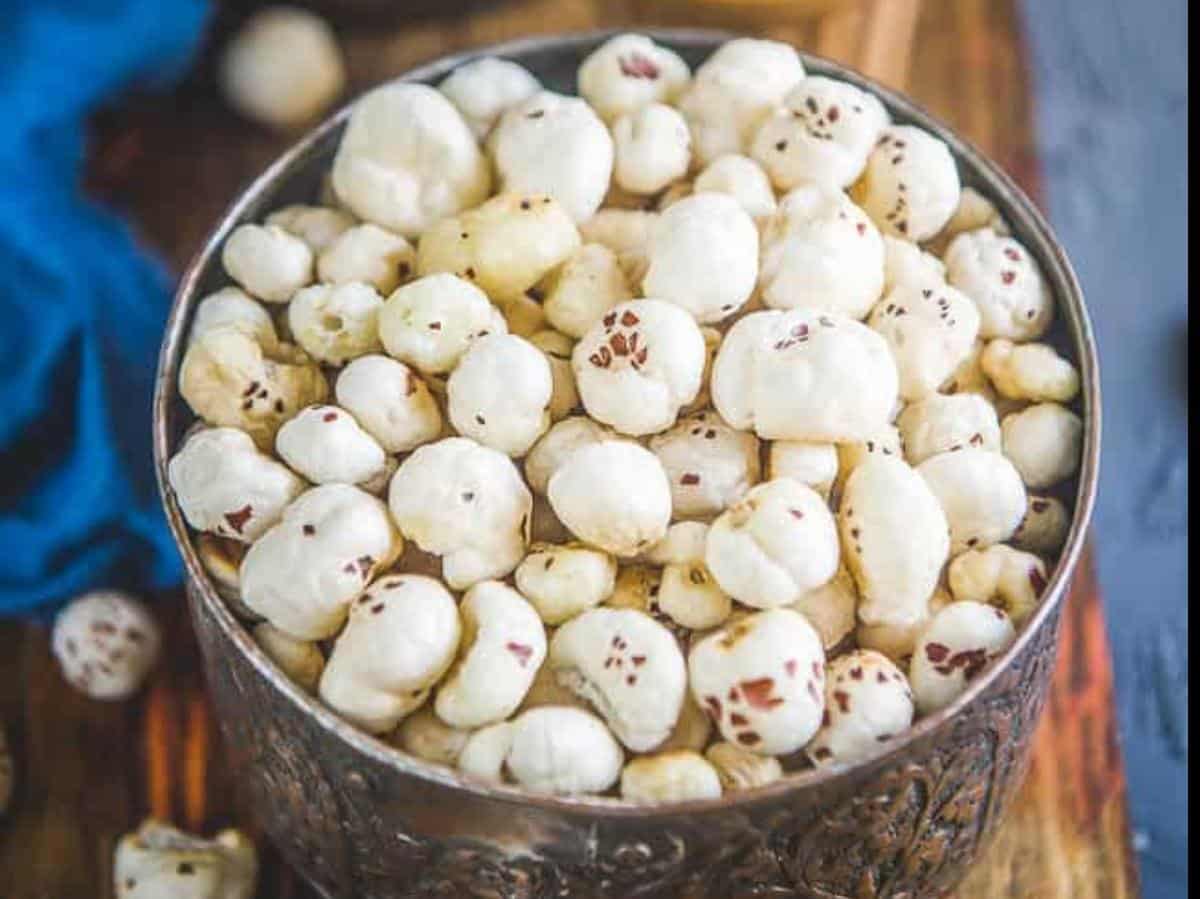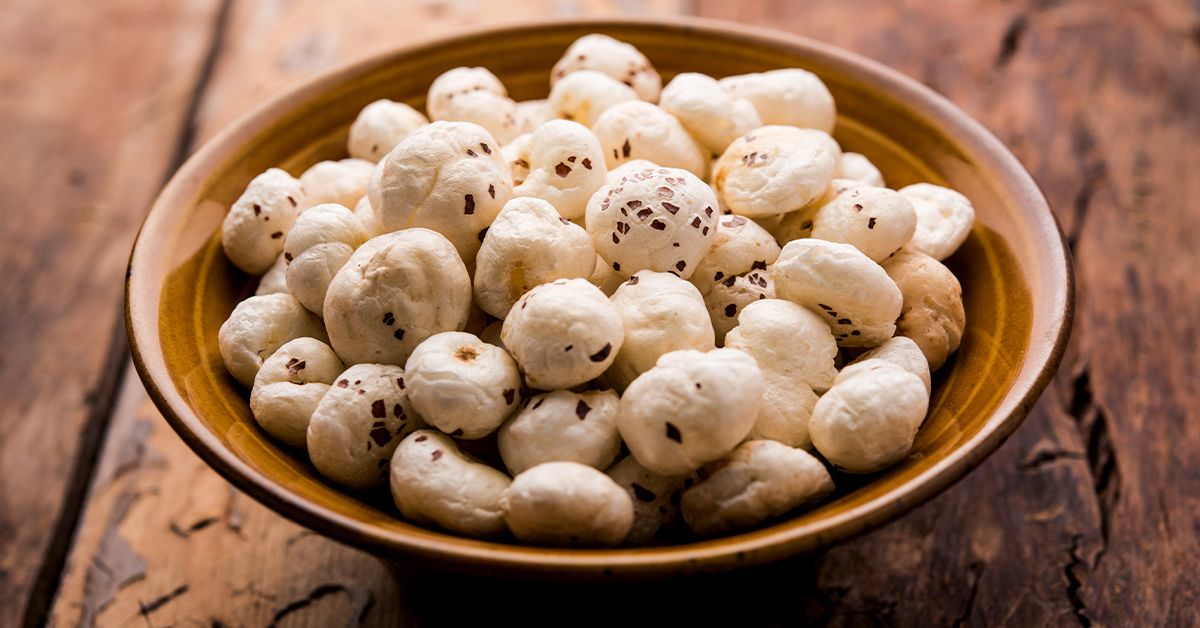Blog
Does makhana have insects?

Understanding Makhana
To answer the question of insects in makhana, let’s first talk about what makhana is and how it is grown and handled. The lotus flower, which grows in small water like ponds and lakes and is native to Asia, gives rise to makhana. The lotus plant’s seeds are collected and then handled to remove the shell and show the kernel inside, which can be eaten. After the seeds are picked and cleaned, they are dried and baked to make them taste better and make them crunchier. They are then ready to eat.
Makhana is not only tasty, but it is also very good for you. It has few calories and fat but a lot of protein, fiber, and minerals that your body needs, like magnesium, potassium, and calcium. Makhana is also gluten-free and safe, so people who are sensitive to certain foods or have to follow certain diets can enjoy it. Makhana has become famous as a healthy food and spice in many meals because it is very versatile and has a lot of health benefits.
Why People Worry About Insects?
Even though makhana is famous and good for you, it has been criticized because of worries that insects might be in the seeds. Some customers have said they found small bugs or maggots in their makhana packages, which makes people wonder what kind of cleanliness and quality control measures were used when the food was being processed and packed. People are now guessing and confused because of these stories, and many are doubting whether makhana is safe and clean to eat.
It’s important to talk about these worries and figure out what’s true and what’s not about insects in makhana. Though makhana is a natural product that comes from the lotus plant, insects are not as common or widespread in the seeds as some people may think. Like any other farm product, makhana may sometimes have small insects or eggs in it, especially if it is not stored and handled properly. But trustworthy makers and wholesalers make sure that makhana is handled and packed in clean areas so that there is less chance of contamination.
Steps to Keep the Quality High
Any worries about bugs in makhana should be put to rest by learning about the quality control steps that are taken when this snack is made and packed. Manufacturers and sellers with a good reputation follow strict quality control rules to make sure that makhana is safe and clean before it gets to customers.
- Gathering: Makhana seeds are taken from lotus plants at certain times of the year, when the seeds are fully grown and ready to be picked. People are careful to choose seeds that don’t have any damage or pests that can be seen.
- Cleaning: Once the makhana seeds have been harvested, they are carefully cleaned to get rid of any dirt, trash, or other unwanted matter. This helps make sure that the seeds are clean before they are processed further.
- Processing: Once the seeds are washed, the shells are removed and the makhana centers on each seed are freed, which are ready to eat. The seeds of coffee are sun-dried or kiln-dried in this procedure to make them not only sound better but also feel better.
- Inspection: All the makhana seeds are carefully checked from the time of processing and packing it to remove all the spoiled and contaminated seeds. The inspection incorporates manual examination, utilizing devices to search for irregular objects.
- Packaging: The seeds that have been tested will then be carefully put into sealed boxes or cases so as they can be stored safely and kept away from contamination. The materials for the packaging are chosen according to how fit they can maintain the quality and also the uniformity of the product while it is stored and transported
Makhana makers and wholesalers, therefore, must implement these quality control steps so that the product returns what it promises including safety, cleanliness, and reduction of insects or any other contaminants from getting into it.
Tips for Buyers
While the makhana snack is usually edible, there are some things that people can do to reduce the possibility of stumbling across bugs or other unsafe type of makhana.
- Buy from well-known brands: While purchasing makhana buy from famous brands and sellers only, who are credible for quality and safe products. Scan for labels that show that the foods are safe to eat or carry an indication of acknowledgment.
- Check out the box: Before you purchase makhana, make sure to get the package checked for any damage or tampering. Avoid buying any items that are torn, cut, or otherwise damaged because bacteria would have easier to go through them.
- How to Store It: As soon as you have purchased makhana, nurse it in a cool dry place away from sunlight and water. It is very important to store the grains correctly to keep them fresh all the time and to minimize the insects getting in the grain.
- Check before eating: Make sure you check the makhana seeds closely for bugs, maggots, and mold before you eat it. Discard those seeds which are odd looking or broken or dark brown.
Those who follow these guidelines will be able to have makhana with peace of mind, satisfying the knowledge that they have applied all the correct procedures to make sure that it is safe and of good quality.
In conclusion
In conclusion, worries about bugs in makhana have led to a lot of guesswork and confusion among customers, making them wonder if this healthy snack is safe and clean. Since makhana is a natural product, it may sometimes contain small insects or larvae. However, trustworthy makers and wholesalers use strict quality control methods to make sure that the risk of contamination is as low as possible.
By learning about how makhana is made and packaged and taking the right safety measures when buying and eating this snack, people can enjoy its tasty flavor and many health benefits without worrying. Makhana is still a popular and healthy snack, and as long as it is stored and handled correctly, it can be eaten safely as part of a healthy diet.
Here are 10 frequently asked questions on the topic Does makhana have insects?
1. Q: Can makhana contain insects?
A: Yes, makhana, like many natural food products, can sometimes contain insects or insect parts. However, reputable manufacturers follow stringent quality control measures to minimize the presence of insects in their products.
2. Q: How do insects end up in makhana?
A: Insects can find their way into makhana during the harvesting, drying, or packaging processes. Despite careful cleaning procedures, it is challenging to entirely eliminate the possibility of insect contamination in natural products.
3. Q: Are there regulations in place to ensure makhana products are free from insects?
A: Food safety regulations vary by country, but most have guidelines and standards that food manufacturers must adhere to, including limits on insect contamination. Reputable producers conduct regular inspections and follow these regulations to ensure the quality of their products.
4. Q: How can consumers minimize the risk of consuming insects in makhana?
A: Consumers can reduce the risk by purchasing makhana from trusted and well-known brands. Additionally, carefully inspecting the product before consumption, especially if there are visible signs of insects, can help avoid consuming contaminated makhana.
5. Q: Can insect contamination be entirely eliminated in makhana products?
A: While manufacturers take significant precautions, it is challenging to completely eliminate the possibility of insect contamination in natural products. However, the risk is typically minimal in products from reputable sources.
6. Q: What health risks are associated with consuming insects accidentally in makhana?
A: Ingesting small amounts of insects or insect parts is generally considered safe for most people and is a common occurrence in natural food products. However, individuals with specific insect allergies should be cautious.
7. Q: How can consumers store makhana to prevent insect infestation at home?
A: To prevent insect infestation, store makhana in airtight containers in a cool, dry place. Avoid exposing the product to moisture and humidity, as these conditions can attract insects.
8. Q: Are there any visual cues to identify insect contamination in makhana?
A: Yes, consumers should look for signs such as unusual discoloration, webbing, or small moving specks, which can indicate insect presence. Thoroughly inspecting the makhana before consumption is advisable.
9. Q: What should consumers do if they find insects in a makhana product?
A: If consumers find insects in a makhana product, they should contact the manufacturer or retailer to report the issue. Reputable companies take customer feedback seriously and often have protocols in place to address such concerns.
10. Q: Is it safe to consume makhana after finding a few insects?
A: It is generally safe to consume makhana if a few insects are found, as they are considered a natural part of the environment. However, personal comfort levels vary, so if in doubt, it is advisable to discard the contaminated portion and contact the manufacturer for further guidance.




Thank you for providing such a valuable resource for learners of all ages. This blog is a true testament to the power of education.
The layout and design of this blog are so inviting and easy to navigate. It’s a pleasure to explore the different topics.